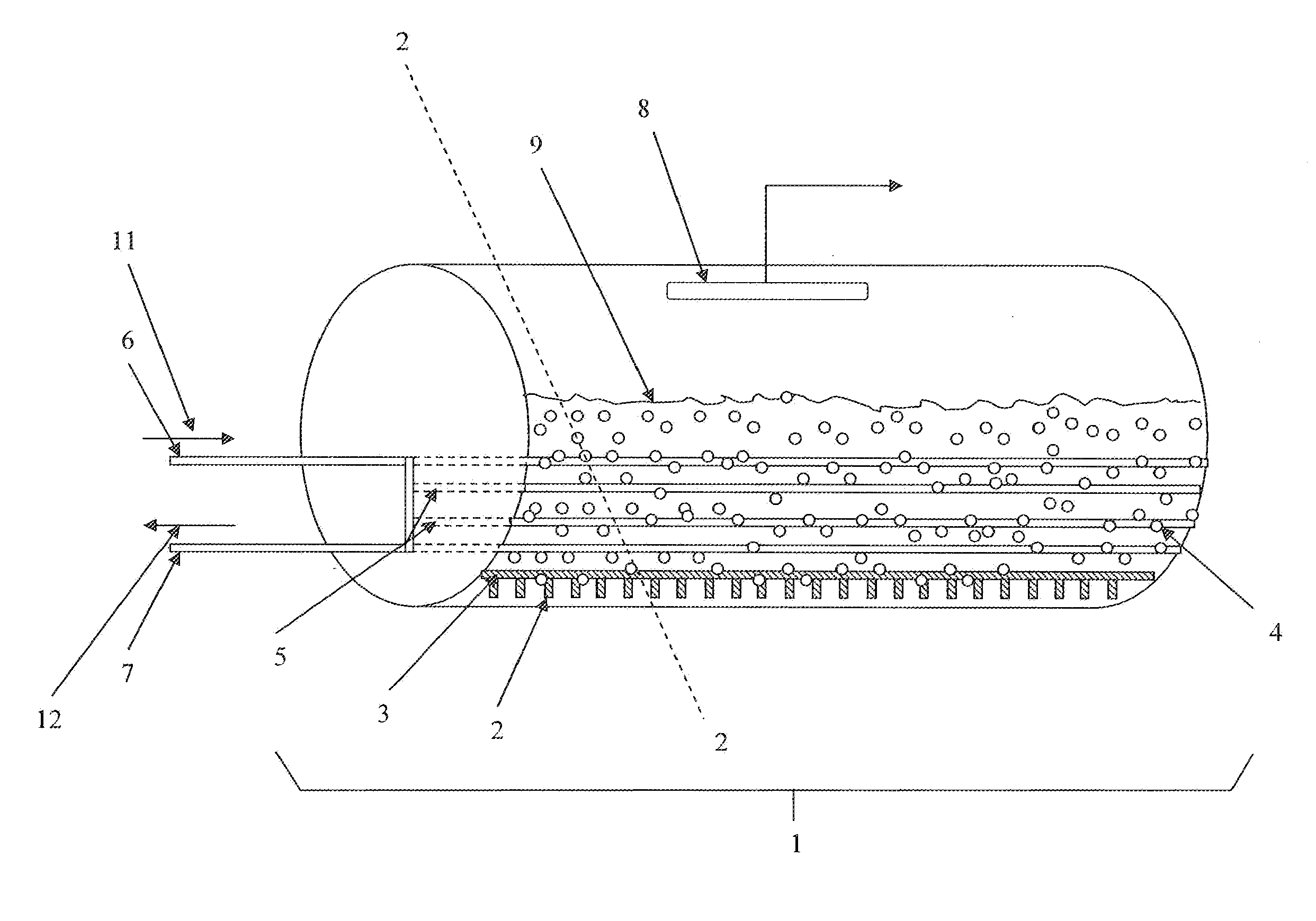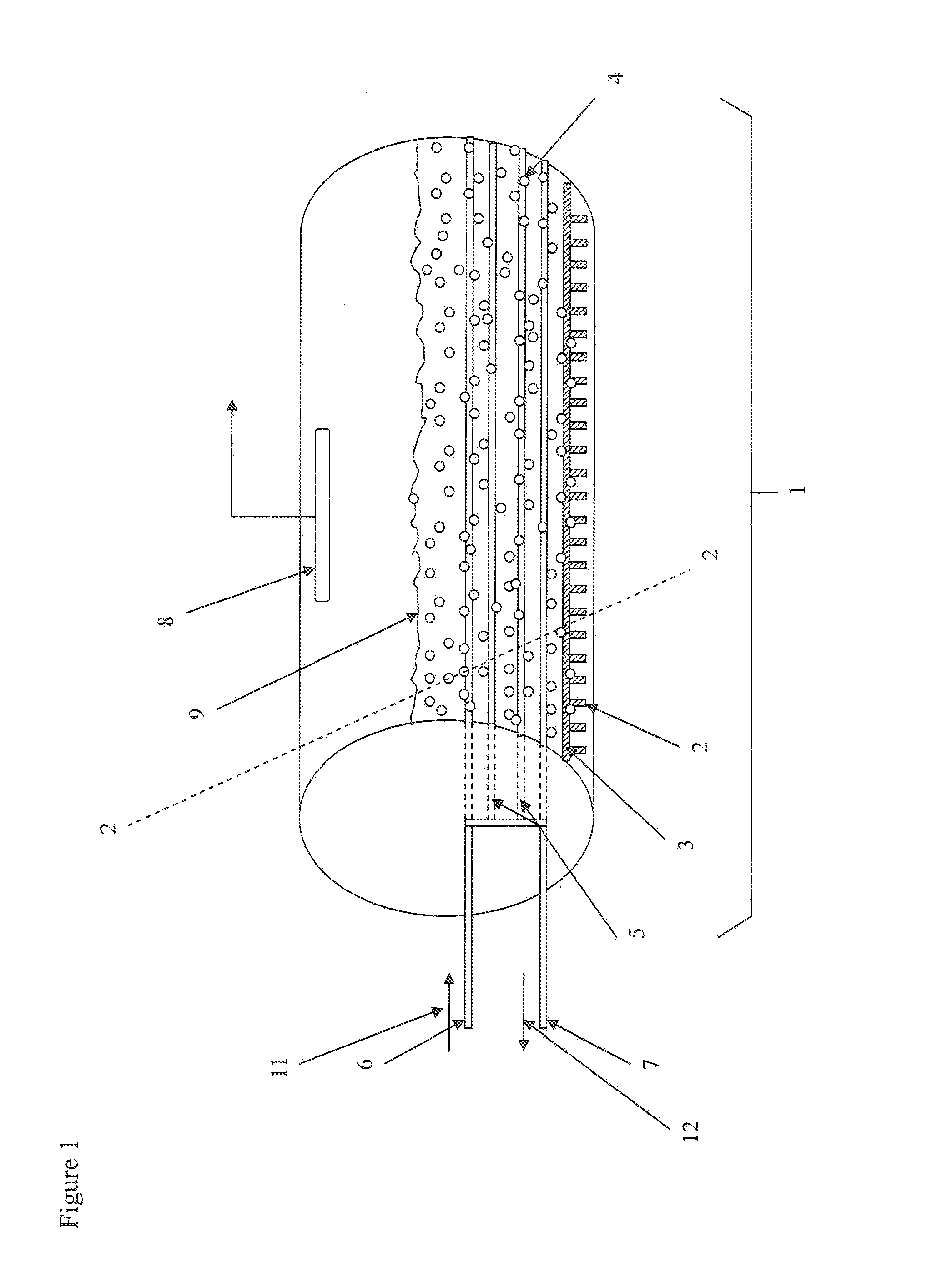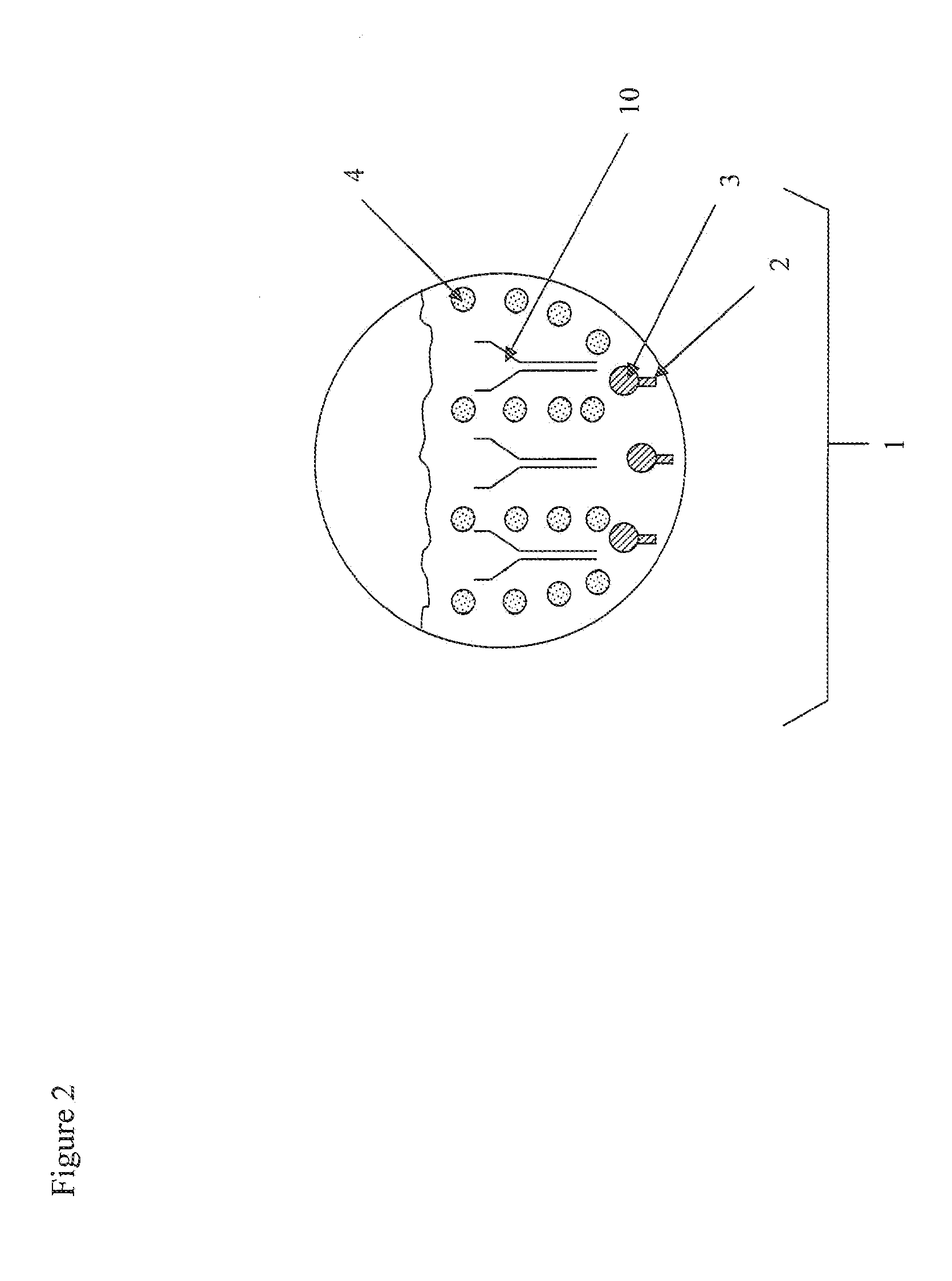Three phase reactor
a three-phase reactor and slurry bubble technology, applied in indirect heat exchangers, chemical/physical/physicochemical processes, lighting and heating apparatus, etc., can solve the problems of high cost and difficulty in scaling up of slurry bubble column reactors, the relationship between the reactor vessel diameter and the reactor vessel height, and the rate of deactivation of fischer-tropsch catalysts. , to achieve the effect of high production level and high carbon monoxide conversion ratio
- Summary
- Abstract
- Description
- Claims
- Application Information
AI Technical Summary
Benefits of technology
Problems solved by technology
Method used
Image
Examples
Embodiment Construction
[0027]The embodiments discussed herein are merely illustrative of specific manners in which to make and use the invention and are not to be interpreted as limiting the scope of the instant invention.
[0028]While the invention has been described with a certain degree of particularity, it is to be noted that many modifications may be made in the details of the inventions construction and the arrangement of its components without departing from the spirit and scope of this disclosure. It is understood that the invention is not limited to the embodiment set forth herein for purposes of exemplification.
[0029]The present invention provides an assembly for a three phase slurry bubble column reactor for use in the Fischer-Tropsch process. Referring to the drawings in detail, FIG. 1 illustrates a perspective view of a three phase slurry bubble column reactor vessel according to the present invention. The reactor vessel is a closed container except as described herein. Synthesis gas is fed int...
PUM
 Login to View More
Login to View More Abstract
Description
Claims
Application Information
 Login to View More
Login to View More - R&D
- Intellectual Property
- Life Sciences
- Materials
- Tech Scout
- Unparalleled Data Quality
- Higher Quality Content
- 60% Fewer Hallucinations
Browse by: Latest US Patents, China's latest patents, Technical Efficacy Thesaurus, Application Domain, Technology Topic, Popular Technical Reports.
© 2025 PatSnap. All rights reserved.Legal|Privacy policy|Modern Slavery Act Transparency Statement|Sitemap|About US| Contact US: help@patsnap.com



